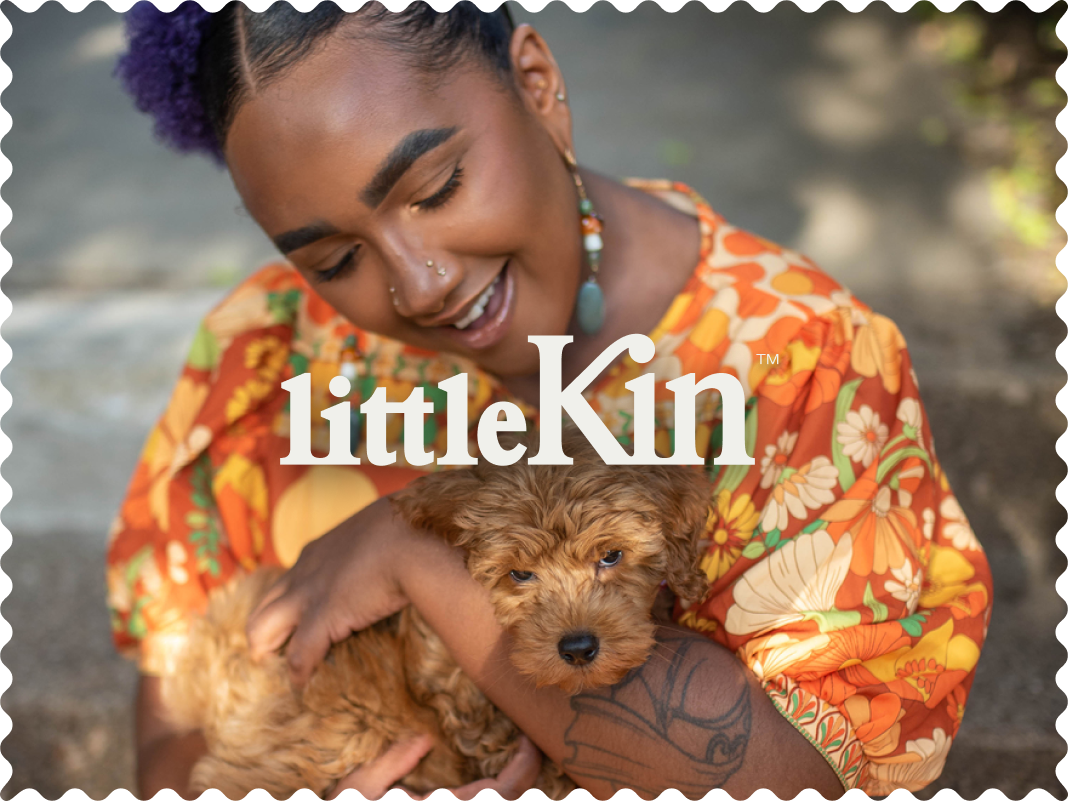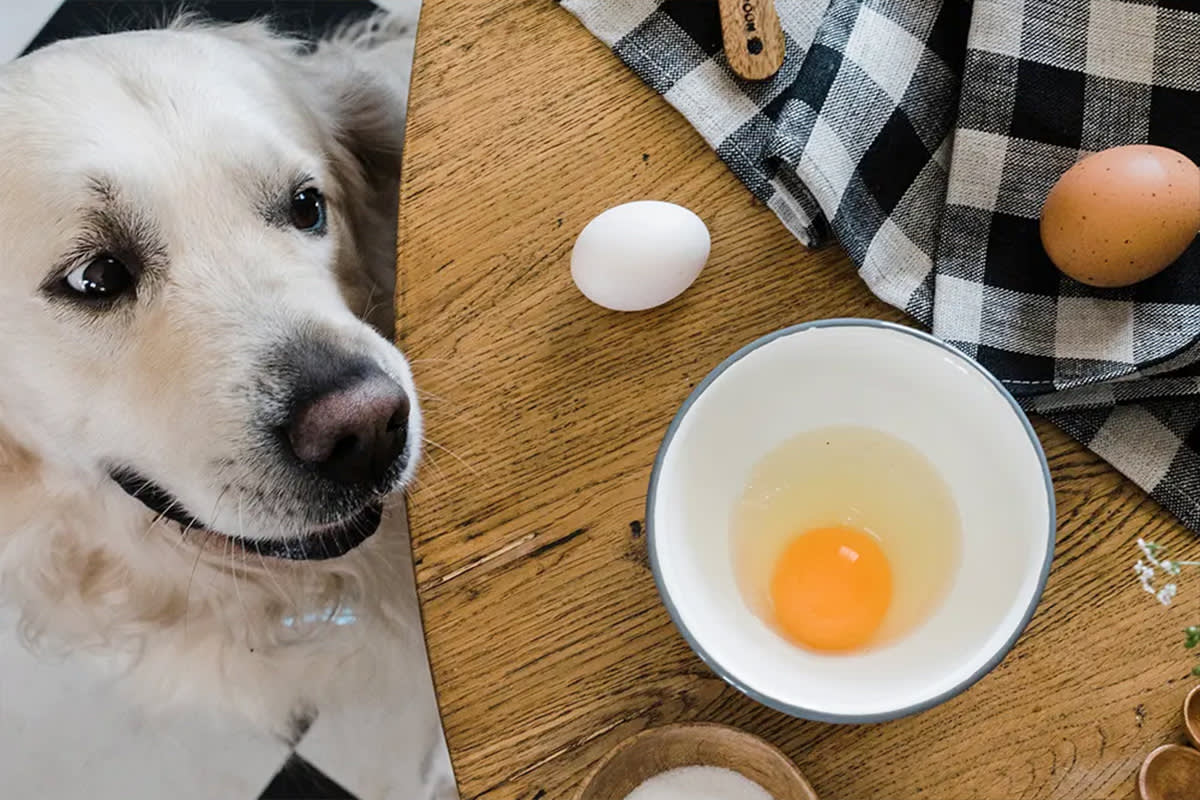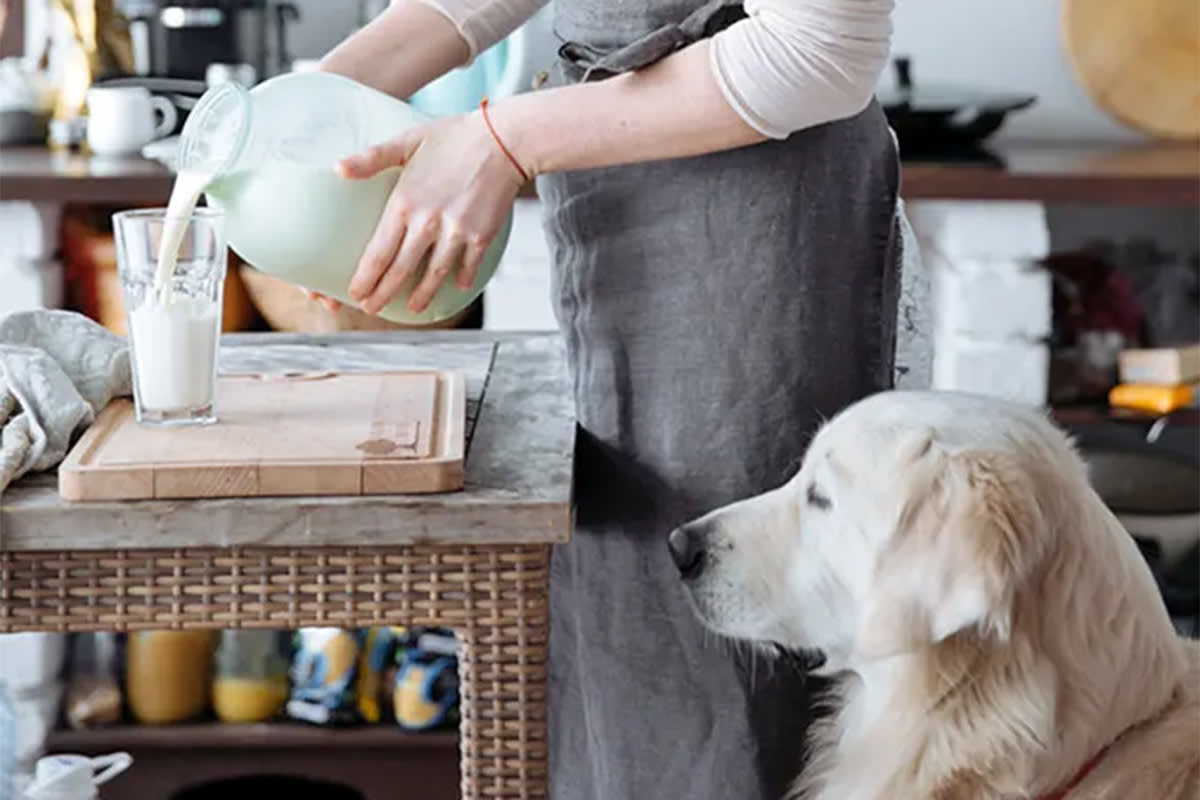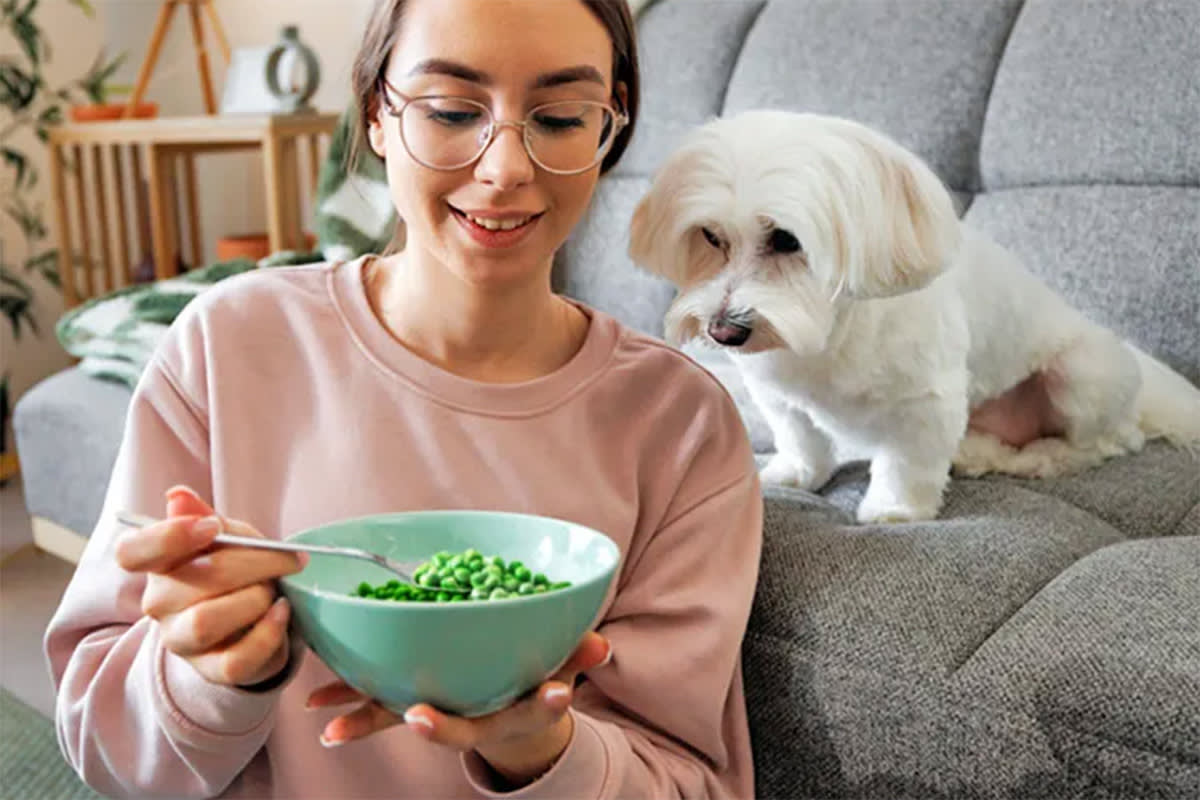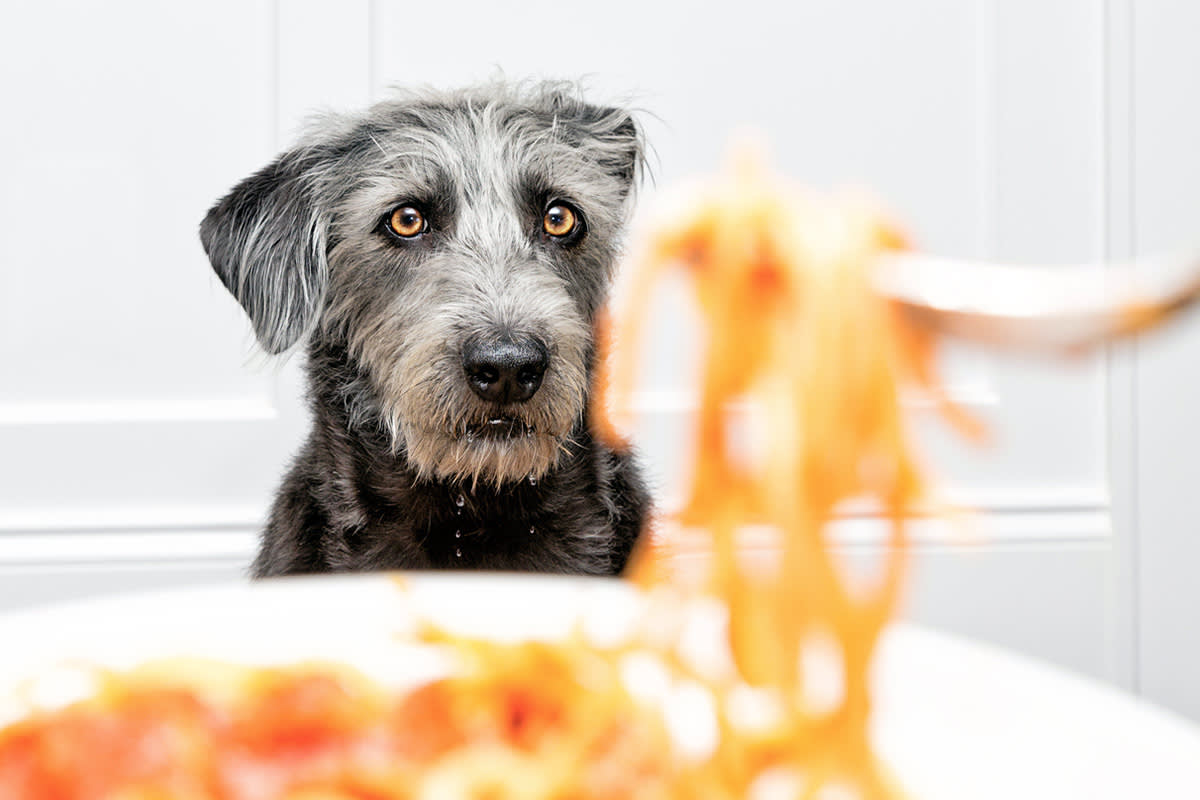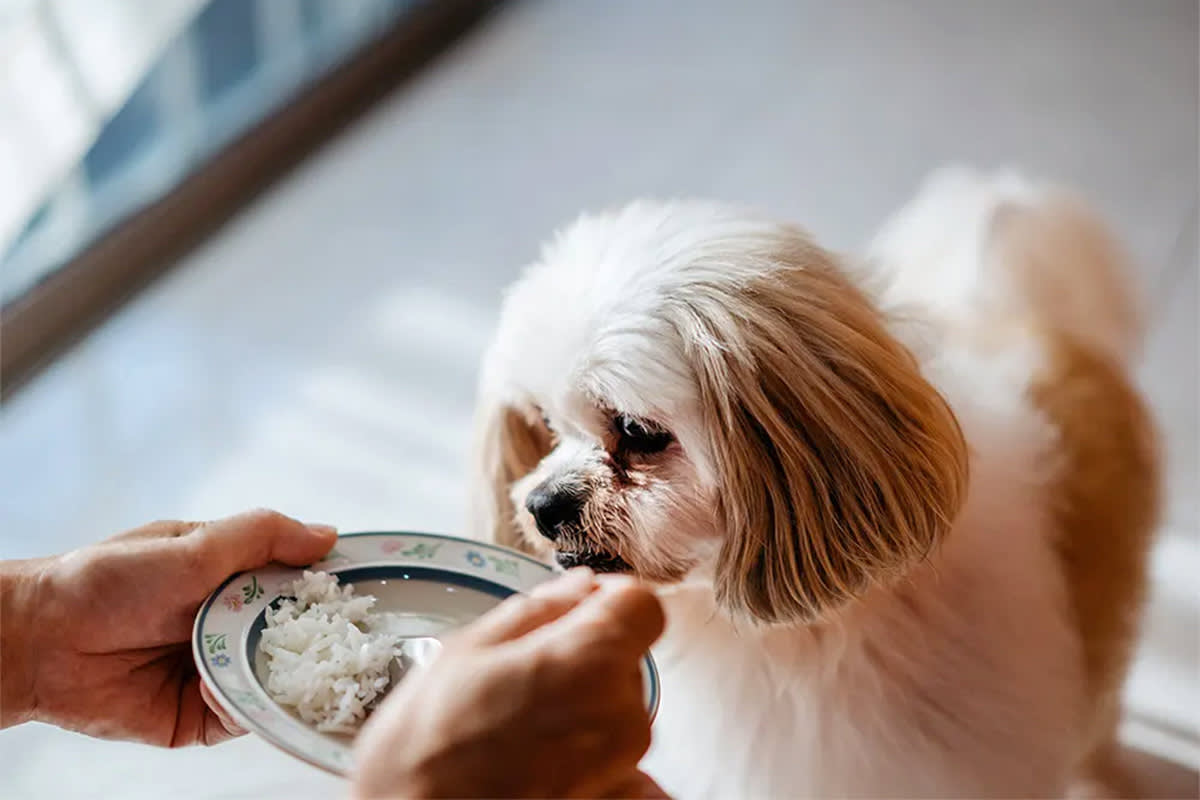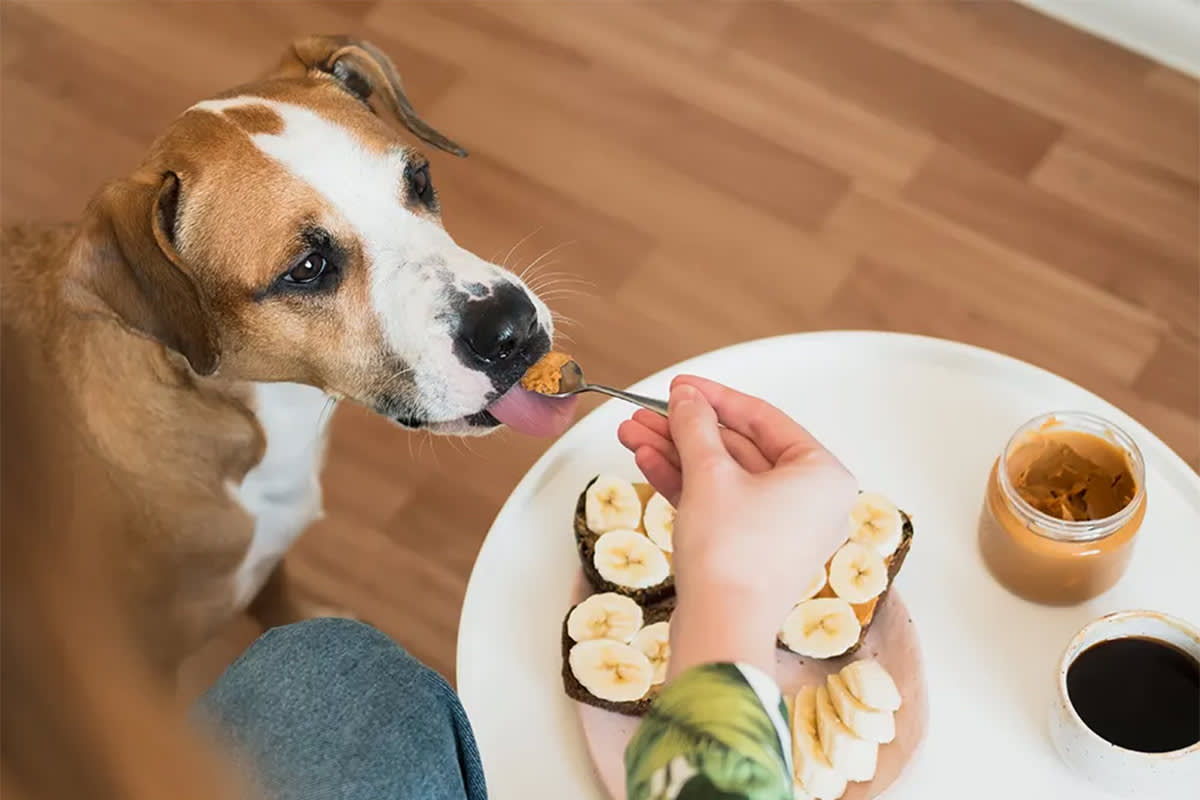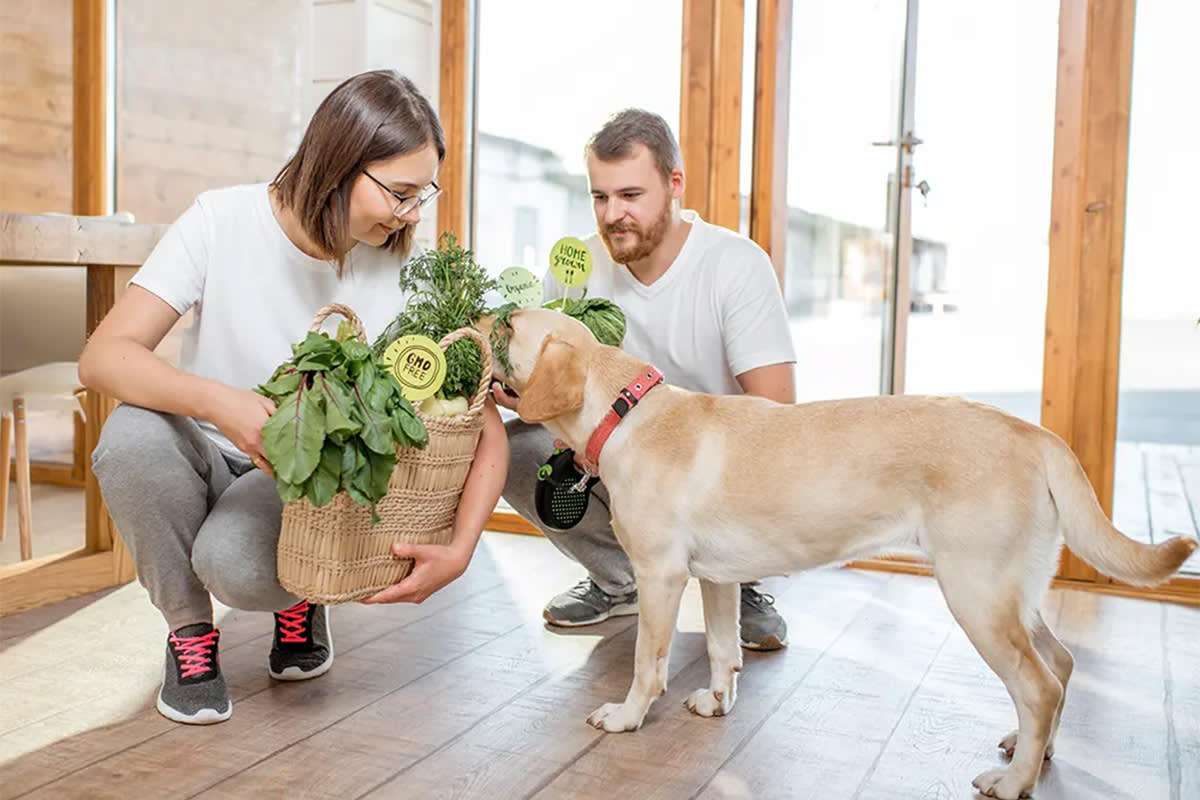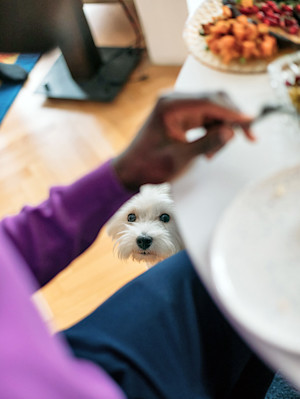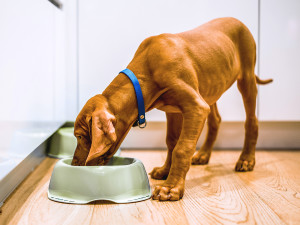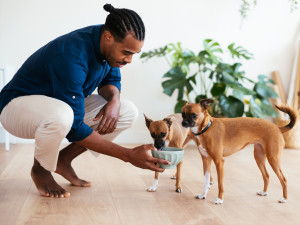8 Foods You’ve Been Told Your Dog Can’t Eat But Actually Can
Moderation is the key of course, but they can actually eat that egg.
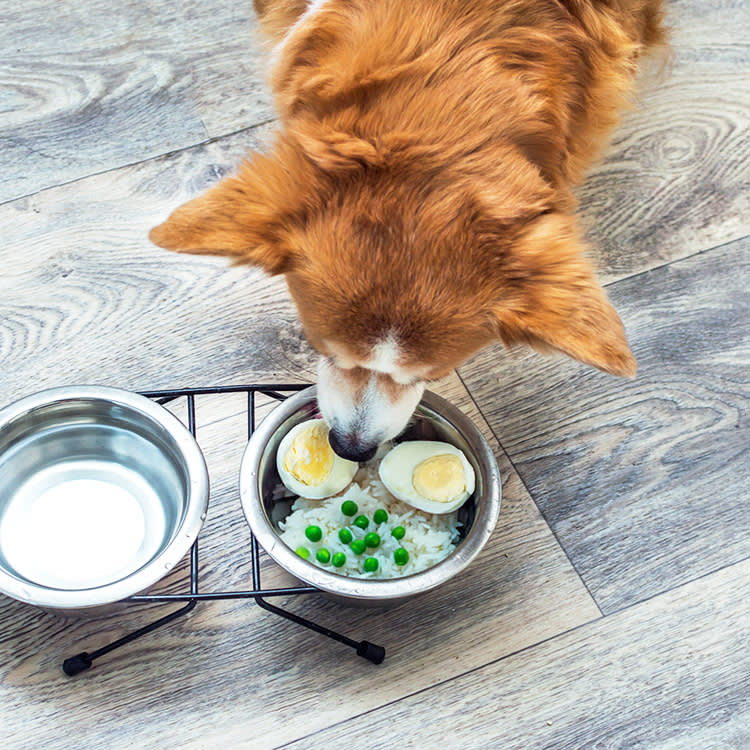
Share Article
It seems like more and more people these days are spoiling their dogs with the food they feed them — even if they can’t be bothered to cook for themselves. My friend Jan, for instance, practically lives off of ice cream and canned soup, but she and her partner cook three meals a day for their dog, Sherlock — sautéing meat, steaming carrots, and preparing white rice in the rice cooker they bought specifically for him and his delicate tummy. They even make sure to cut the carrots and meat into the shapes he likes: tiny cubes for the meat and half moons for the carrots. “He used to like full moons, but he’ll only eat the half moons now,” she tells me.
Some people might think this is excessive. “Why not just feed him a can of something and be done with it?” they might say. But cooking for their dog is one of the many ways that Jan and her partner show their love for Sherlock, who turned 16 this year. Once they started cooking for him, his appetite improved, as did his overall health and happiness. After that, there was no going back.
Of course, finding the right diet for Sherlock required a bit of trial and error. It also required that they sift through a lot of misinformation about what was and was not appropriate for dogs to eat. They heard white rice, for instance, was just a filler food and should be avoided as it could spike their dog’s blood sugar and make him fat.
But their vet explained that rice was actually good for dogs in moderation, especially ones like Sherlock with sensitive stomachs. In our protein-obsessed culture, rice and other carbohydrates are often vilified, but there is nothing wrong with them. Carbohydrates are fuel for active minds and bodies and people often forget that they are full of essential nutrients.
How much do you spend on your pet per year?

It’s not just carbs that get a bad rap, though. And dog parents are often told to avoid foods that are actually totally fine for their dogs to eat, especially if they are otherwise receiving a balanced diet, which of course, does not have to be home cooked. Foods like chocolate, onions, avocados, grapes and raisins, and certain nuts are toxic to dogs and should always be avoided, but if you search online for “foods that are poisonous to dogs,” you’re likely to see other foods foods lumped in with these that are actually totally fine.
To help sift through the noise, we spoke with veterinarian Dr. Hillary Wolfe of Vetnique.comopens in new tab and canine nutritionist and wellness consultant Gerald Pepin of Caninenutritionist.co.ukopens in new tab. Here’s what they had to say:
Foods your dog can eat that might surprise you.
Eggs
“Eggs are an excellent source of complete protein,” Dr. Peppin says. “They often get a bad rap due to their calorie and fat content,” Dr. Wolfe says. “But in moderation, they are a healthy addition [to your dog’s diet] and contain healthy fats and vitamins.”
Just make sure to always cook them first, as raw eggs pose a risk of bacterial infections like Salmonella and can cause a biotin deficiency due to the avidin protein in egg whites. The doggo in the picture above needs to wait to enjoy their eggs until they are fully cooked!
Dairy
“Most dogs will happily tolerate dairy products,” Peppin says. The key is moderation. “Most pets are not accustomed to eating dairy after they’re weaned,” adds Dr. Wolfe, so you want to introduce it slowly and only as a treat, rather than a main feature of their diet. “That said, some pets do benefit from small amounts of goat’s milk,” she says. Goat’s milk is a good source of essential nutrients and contains smaller fat globules and lower levels of lactose compared to cow's milk, making it easier for dogs to digest.
Peas
“Some people refer to peas as a ‘filler’ ingredient, which isn't entirely true,” Dr. Wolfe says. “They are one of the less biologically appropriate ingredients, but they are still a source of nutrients.”
“They are a healthy source of protein, vitamins, and minerals for dogs,” Peppin says. When it comes to this ingredient in your dog’s food in place of grains, though, you need to talk to your vet. They should always be receiving a fully balanced, nutritious diet outside of the treats and snacks they eat. When you feed your pup peas, don’t add the butter or salt and pepper that you may normally like with yours. Just good ol’ peas.
Pasta
Dr. Wolfe doesn’t recommend pasta, due to its high glycemic index, but it’s not poison. In small amounts, it is perfectly healthy for dogs to consume. And according to Peppin, it is great for dogs who need to put on a little weight. Make sure to feed this food without added sauce, butter, or garlic that could be toxic or, at the least, harmful to your pet. Plain is best!
White rice
“This is another carbohydrate that can spike blood sugar,” Dr. Wolfe says. “But it is useful for pets with sensitive stomachs that need highly digestible carbs!”
If you’re looking for a more nutritious option, Peppin recommends brown rice, which is an excellent source of fiber and antioxidants. These two things may help protect cells from damage and reduce the risk of chronic diseases. Again, do not feed your pup this food with additives, like butter or garlic. Serve it plain!
Oatmeal
“This is another carb that generally has a bad reputation when it comes to pets,” says Dr. Wolfe. “But oatmeal, in moderation, is yet another safe complex carbohydrate that can supply vitamins and healthy fiber.” Do not feed your dog oatmeal that has raisins or anything that can be toxic to them. Plain oats all the way — adding something like brown sugar is also not healthy for them.
Peanut butter
Due to its high fat content, Dr Wolfe recommends only using it sparingly as either a high value reward or a means of administering pills, but it’s not a bad food. “Just make sure any peanut butter you give your dog is xylitol-free,” Peppin says. “The artificial sweetener xylitol is highly toxic to dogs in even the smallest quantity.”
Fruits and vegetables
This includes those with higher sugar content, including apples, bananas, strawberries, carrots, etc. “People often think these will spike their dog’s blood sugar, but they also contain a lot of fiber, which is good for stabilizing blood sugar, and they supply high levels of antioxidants,” Dr. Wolfe says.
Still, Peppin recommends a protein-first diet for most dogs. “Most fruit and vegetables are perfectly healthy for dogs but should not make up more than about 10 percent of the overall diet,” he says.
So, if you’re thinking of incorporating more human-grade and whole foods into your dog’s diet, go for it! Just do so slowly, and make sure you consult with an expert first. Not all vets are trained in animal nutrition to the same degree, so make sure to ask your vet about their particular expertise and reach out to a trained canine nutritionist as necessary.

Charles Manning
Charles Manning is an actor and writer based in New York City. In his free time he likes to cook, go swimming at the public pool, volunteer at the LGBTQ senior center, and foster senior and special-needs cats. His work has previously appeared in Cosmopolitan, Elle, Marie Claire, Harper’s Bazaar, Seventeen, and Nylon.
Related articles
Are Dogs Lactose Intolerant?
They really want that cheese...
![brown dog begging for food at table]()
Foods Your Dog Can’t Eat
Even if they aren’t too proud to beg, you shouldn’t let your pup in on these snacks.
![Cute white dog looking up at someone eating dinner.]()
Complete List of Human Foods Your Puppy Can Eat (and What They Can’t)
Because wanting to eat everything and being able to eat everything are two very different things.
![brown puppy eating food out of green bowl]()
A Digestible Guide to Healthy Dog Food for Your New Pup
How to pick the right grub for your dog when there are So. Many. Choices.
![Man crouching down to let two dogs eat out of a bowl]()
How Many Treats Is Too Many?
The key to curbing mindless snacking — this is for your dog.
